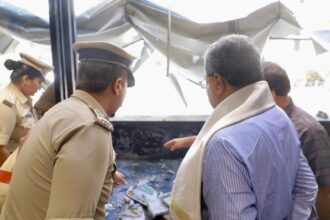Tom Moody, a former Australian all-rounder who served as the cricket director, and Sri Lanka Cricket (SLC) reached a mutual agreement on Tuesday to end his tenure with immediate effect.
In 2021 Tom Moody was appointed on consultancy basis, and his role was to fulfill 300 days of ‘Mandatory Assignment’ during his contracted three-year period.
Moody was directly reporting to the Technical Advisory Committee, which no longer existed, in the judgement of the SLC Executive Committee, hence his services were no longer needed.
“Moody’s appointment as the director of cricket, effective March 1, 2021, was made based on a recommendation by the Technical Advisory Committee of the SLC. Sri Lanka Cricket, while thanking Tom for his contribution to the game of cricket in Sri Lanka during his tenure, wishes him the very best for his future endeavours,” said SLC in a statement.
“It was a privilege to service SLC again and I’m proud of what I managed to achieve during my term with the guidance of the Technical Advisory Committee,” said Tom Moody.
Earlier, there were rumours SLC was planning to part ways with Moody, ending a three-year deal in just one-and-a-half years.
While SLC has decided to bring a premature end to Moody’s contract, it will retain Mahela Jayawardena, consultant coach, despite the former Sri Lanka skipper accepting a broader responsibility with Mumbai Indians.
Tom Moody part ways with Sri Lanka Cricket as Director
The SLC made its decision because it wanted to give Jayawardena a bigger role.
A Technical Advisory Committee headed by Aravinda de Silva reportedly hired Moody for a three-year contract in March of last year. Moody was given a broad position that included local and international cricket, men’s and women’s sports, and both domestic and men’s games.
Moody had been Sri Lanka’s coach between 2005 and 2007, the years in which Sri Lanka tasted considerable success in the Test format, and became World Cup runners-up. However, his latest stint with SLC attracted more brickbats than praise, with many questioning the need to hire an Australian to restructure the country’s domestic cricket when it had enough and more qualified cricketers within the country to do so.






